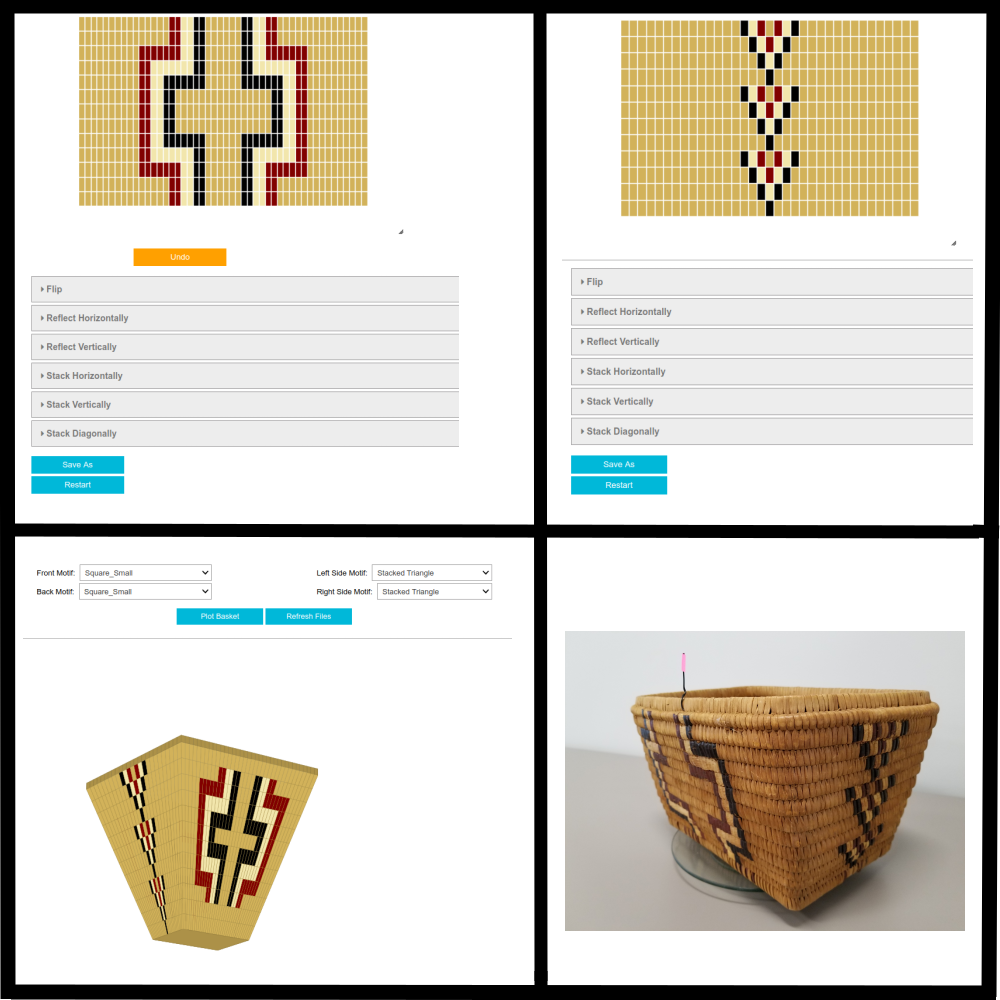In December, students and alumni from Simon Fraser University’s mathematics department created a new application that can teach math using Indigenous basketry-weaving patterns.
Designed for students from grades 5–12, this as-yet-unnamed new app is free-of-charge and it can be used on various web browsers, such as Google Chrome and Firefox.
This novel application was developed by Howell Tan, Jenifer Pham, and Laura Gutierrez Funderburk under the supervision of Drs. Cedric Chauve and Veselin Jungic.
“The purpose of this application is two-fold: on one hand we wish to increase awareness of traditional Coast Salish basket weaving practices and on the other we want to encourage students to learn more about mathematics,” the app developers shared in a collective email interview with The Peak.
The team incorporated the basketry patterns of the Tla’amin Nation residing on the Sunshine Coast of B.C. into their prototype. They explained that the Tla’amin Nation’s basketry patterns possess discrete properties that make them ideal for teaching mathematical concepts.
According to the team, the new application teaches mathematical skills such as two-dimensional geometric figures and transformations, including graphical reflection and translation. It also introduces the implicit basics of algorithmic thinking. What this means is that the application allows the “design of a sequence of instructions that can be used by a computer to perform a task (here to create a basket pattern),” they explained.
“The final outcome is a three-dimensional representation of a basket with patterns generated by the user.”
The project was kickstarted in spring 2018 when Chauve and Jungic visited the Tla’amin Nation. Back then, Chauve had just established the SFU branch of the Callysto project, which is a free online platform that teaches students from grades 5–12 research and computer skills such as “coding, digital math functions, and multimedia,” according to its website. Callysto is a two-year joint project funded by Cybera and the Pacific Institute for Mathematical Sciences (PIMS).
Jungic, on the other hand, was looking for ways to further broaden the Math Catcher Program’s collaboration with the Tla’amin Nation. The Math Catcher Program is an initiative that teaches mathematics through Aboriginal storytelling, according to its website.
During their trip, Jungic and Chauve realized that their research initiatives aligned with one another, and they decided to create a new application that would be based on the mathematical patterns in the traditional Tla’amin basketry.
The app developers explained that they first built this application via Python programming language on the Jupyter platform — and they created their first prototype in April 2018. As outlined on its website, Jupyter is a digital platform that lets users perform functions like “numerical simulation, statistical modeling, and data visualization.”
Some of the challenges the team faced in developing their product were: overcoming computational constraints to make the application as realistic as possible, and finding a way to produce shape patterns that users can easily manipulate via “interacting with buttons and clicking.”
In terms of the team’s future, they expressed that they want to share their product with mathematics educators across Canada with the purpose of raising awareness of traditional First Nations Peoples’ cultures and motivating students to explore mathematics.
“We hope others can learn more about traditional Coast Salish weaving practices and that we can motivate students to learn and maintain this tradition,” they concluded.


[…] what follows, I will briefly describe the Callysto Salish Basket project at Simon Fraser University. This project led to the creation of an interactive online tool that […]
[…] what follows, I will briefly describe the Callysto Salish Basket project at Simon Fraser University. This project led to the creation of an interactive online tool that […]
[…] what follows, I will briefly describe the Callysto Salish Basket project at Simon Fraser University. This project led to the creation of an interactive […]